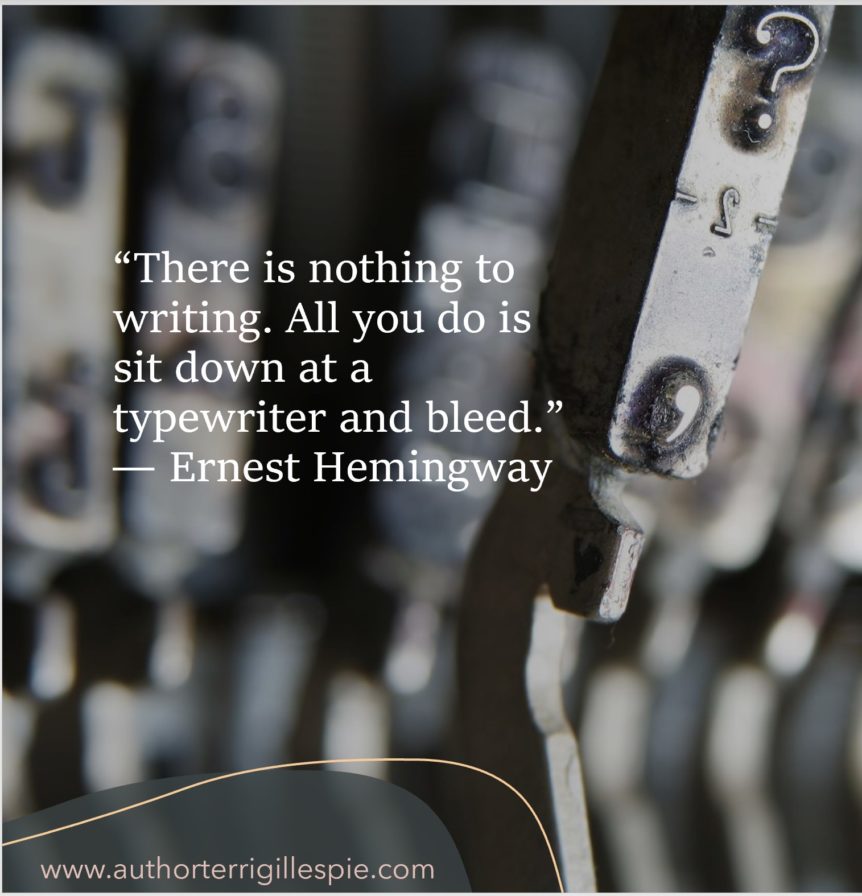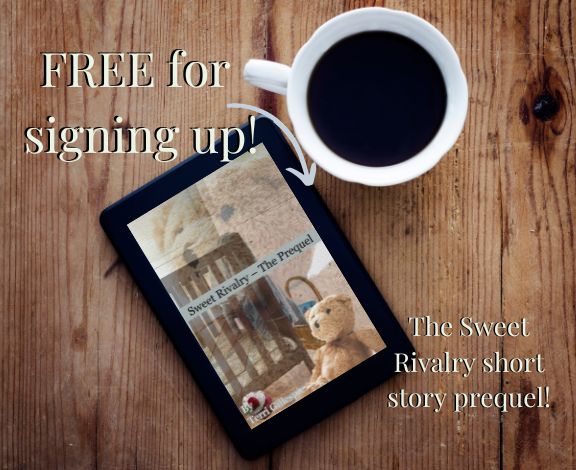Sit Down and Bleed . . .
 . . . seems a bit overdramatic, doesn’t it? But, that was Hemingway, larger than life and in your face. Still, he’s not wrong. For an author to invest in a story means giving up showers, friends, food — well, somehow I’m still able to eat — exercise (oh, well), and . . . Okay, you get the idea.
. . . seems a bit overdramatic, doesn’t it? But, that was Hemingway, larger than life and in your face. Still, he’s not wrong. For an author to invest in a story means giving up showers, friends, food — well, somehow I’m still able to eat — exercise (oh, well), and . . . Okay, you get the idea.
A story begins with a seed of an idea. Just a few words on the back of a deposit slip, a church bulletin, a grocery receipt. Gazing out a window but not seeing the view because an idea is forming. Sometimes emotions so strong come from nowhere, and then a face appears who calls out to us to write their story.
Those are the seeds.
Like the parable of the sower in Matthew, as these stories sprout they may never grow past a few pages of plotting — too many rocks or shallow soil cannot support a full idea. Others are picked off by other authors who had similar ideas — authors who sell more books. Or the weeds of discouragement and doubt and insecurities choke the story until it ends up deleted from the computer or wadded up in the trash.
We bleed over the lost seeds.
Once that seed lands on fertile soil and begins to sprout, we must nurture it. Protect it.
I used to talk about new story ideas to anyone who would listen. Unfortunately, my efforts to tell others wasted energy I could have used to research, plot, develop my characters. The euphoria of a viable story idea can so easily fool a writer. When the excitement dissipated, and it was time for the hard work, the story often stayed in my imagination and was never born.
Or, others changed my story into how they would write it attempting to make my seed grow into something it was never supposed to be. It carried the other person’s blood, not mine.
We bleed over the seeds that die.
Gee. I hadn’t meant for this to be depressing.
Here’s the thing, a writer can watch many seeds wither and die before that one seed grows into a real story. Once that “real” story takes root and grows, that’s when the real work begins.
I have a box of story ideas, but until I truly “bleed” into the characters and breathe life into them, readers have every right to not connect with them.
We bleed into the seeds that live — How I Begin . . .
How do I begin? For me the story can begin anywhere — the beginning, ending, one scene, or the characters. For me, it mostly begins with the characters.
characters.
One would think I would begin with the protagonist — the main character — but usually I begin with the character who is the most vocal. They have something to say, so I need to find out what they want to say and why. Sometimes, like She Does Good Hair, the strongest voice was Aunt Edna who died before the story began, yet she had a profound influence on all the characters.
One of my favorite books to form my characters is Building Believable Characters by Marc McCutcheon. My copy is worn from two decades of use. It has a character questionnaire with things like what kind of student they were, how they handle anger or rage, not just the color of their eyes or hair.
Answering these questions forms my characters into “real” people. If I saw them on the street, I would call out to them and invite them for a coffee.
Once I get inside their heads, I write the main characters’ backstories. The tragic loss of their mother at an early age. Escaping from an abusive situation — how they did it and then where did they go. Moving to another state and meeting people they never would have associated with at their former home. Things that might never get into the book, but they are a part of the character nevertheless.
During this process, many times the character will let me know if I’m on the wrong track in my thinking. Yes, weird, but they do. One character let me know they were going to die, but it was important to the plot that they did.
That’s when I “bleed.” When I give my heart to those characters. Because, when I give my heart to the story, I give it to the reader. Not simply for entertainment on a chilly, rainy night, but so that they see the value of the characters within the story. A story that gives hope, riddles, frightens, but ultimately engages that reader to feel and believe.



